Info
Subfamily: Panicoideae
Genus etymology: Echinochloa = "hedgehog grass" [Greek] refering to the awned florets which are tightly arranged resembling a hedgehog
Species etymology: haploclada = "single branch" [Latin] refering to the panicle composed of branches
Photosynthetic type: C4 (warm season)
Nativity: naturalized - accidental
First recorded in Hawaiʻi: 2023
Map
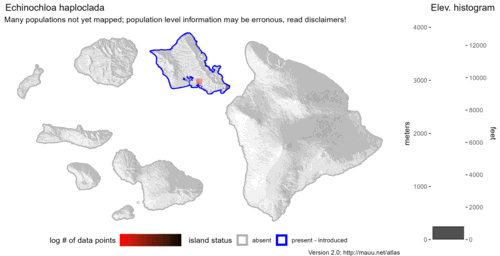
Inflorescence
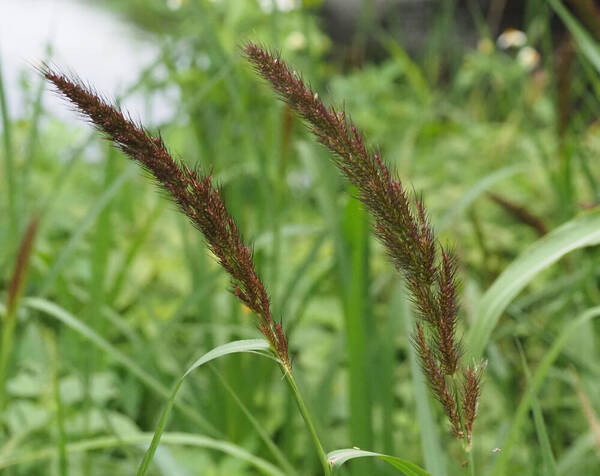
Habit
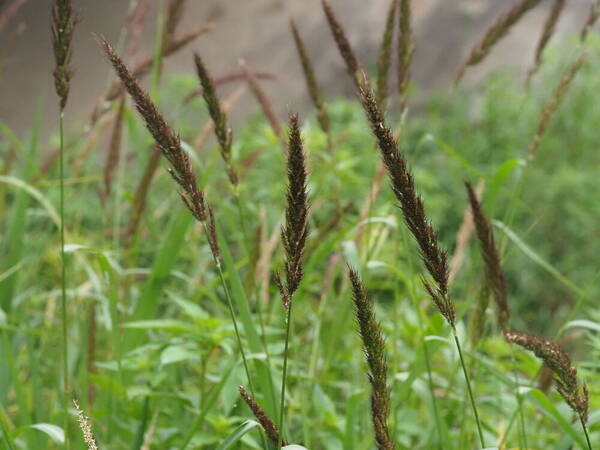
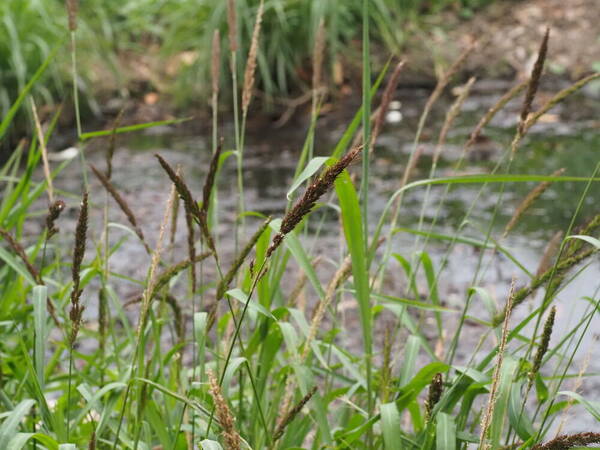
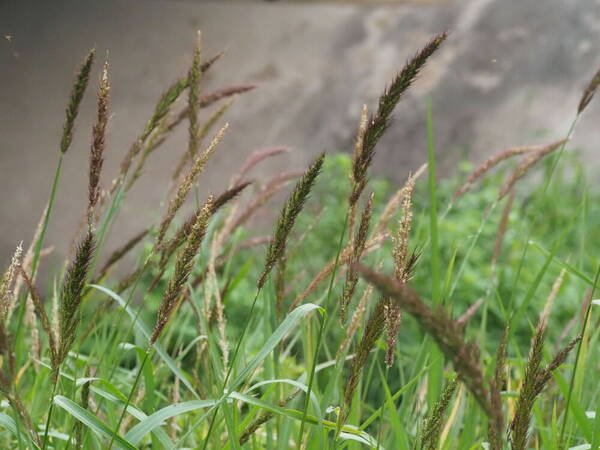
Spikelets
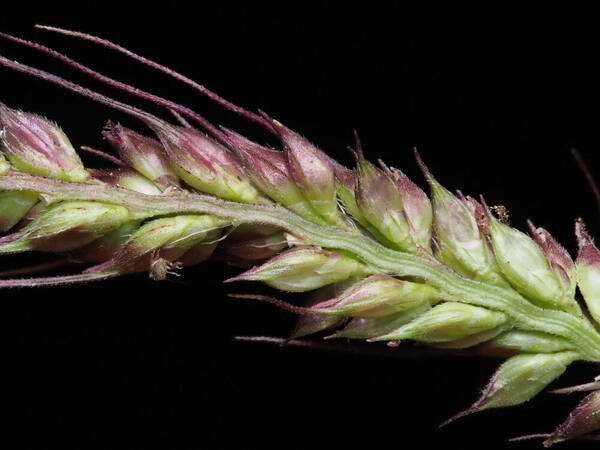
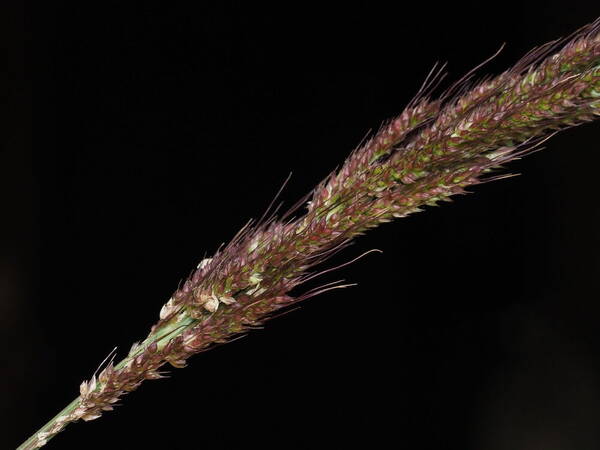
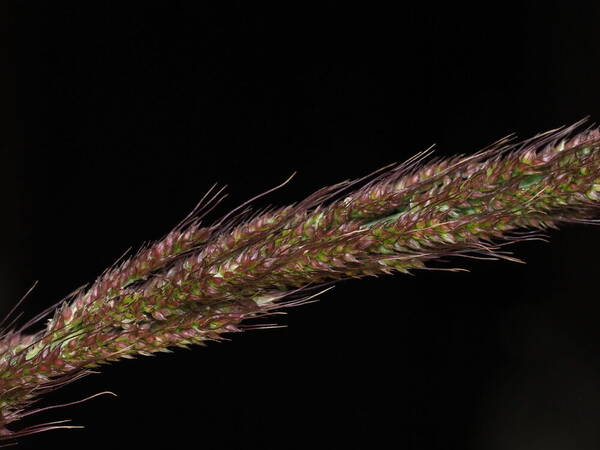
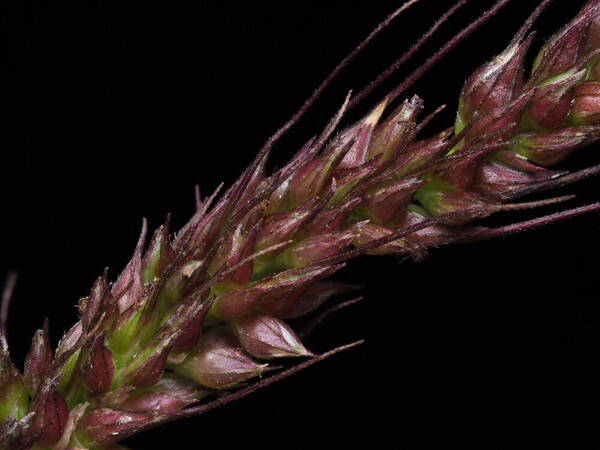
Landscape
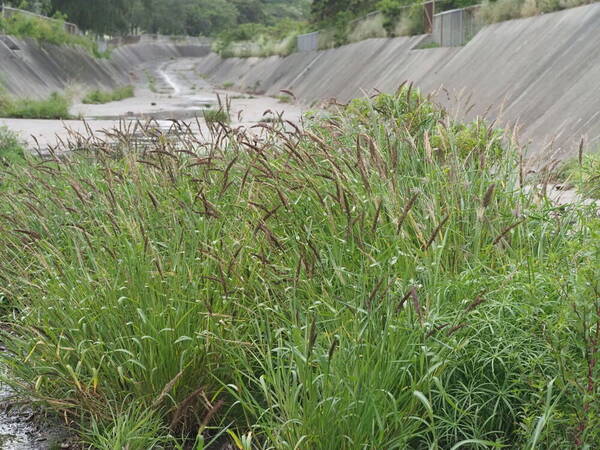
Collar
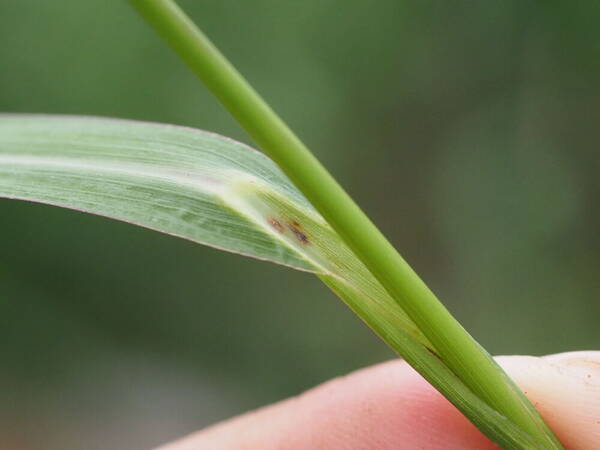
Culm base
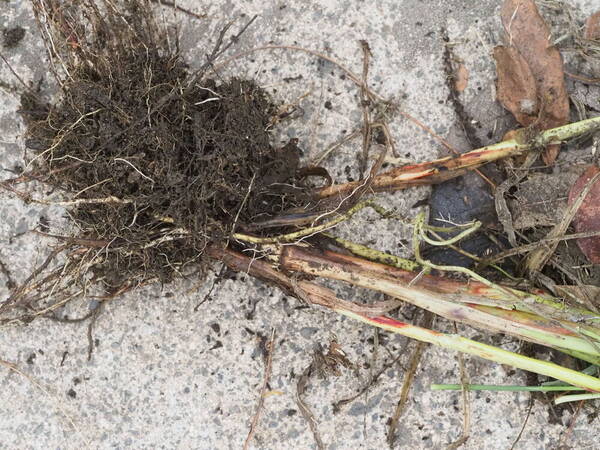
Description
Rhizomatous perennial; culms 30–300 cm. high, often wiry. Leaf-blades 5–30 cm. long, 3–10(–20) mm. wide, occasionally with purple bars; ligule absent or a fringe of hairs; sheaths glabrous. Inflorescence lanceolate (occasionally linear), 7–25 cm. long, the racemes 1–5 cm. long and densely crowded with appressed spikelets. Spikelets elliptic to subglobose, small, 1.5–2.5(–3) mm. long, ± hispid; lower floret ♂, acute or with a short curved awn up to 5(–15) mm. long; upper lemma 1.5–2.3 mm. long.
(Description source: Clayton, W.D. & Renvoize, S.A. 1982. Flora of Tropical East Africa. Gramineae (Part 3). A.A. Balkema, Rotterdam. 448 pp. )
Rhizomatous perennial; stems up to 300 cm high, often wiry; ligule absent or a line of hairs. Inflorescence lanceolate (rarely linear), 7–25 cm long; racemes 1–5 cm long, densely crowded with appressed spikelets. Spikelets elliptic to subglobose, small, 1.5–2.5(–3) mm long, ± hispid; lower floret male, acute or with a short curved awn up to 5 mm long; upper lemma 1.5–2.3 mm long.
(Description source: Cope, T.A, (1995) Flora Somalia, Vol 4. Royal Botanical Gardens, Kew, London. 312 pp. )
Tussocky perennial. Culms 30–300 cm. high, arising from a short oblique rhizome, often wiry; ligule absent or a line of hairs; leaf laminae occasionally marked with purple bars. Inflorescence 7–25 cm. long, lanceolate (occasionally linear); racemes 1–5 cm. long, densely crowded with appressed spikelets. Spikelets small, 1.5–2.5(3) mm. long, subglobose to elliptic, ± hispid. Inferior floret male, its lemma acute or with a short curved awn up to 5(15) mm. long. Superior lemma 1.5–2.3 mm. long.
(Description source: Launert, E. & Pope, G.V. (eds.). 1989. Flora Zambesiaca. Volume 10. Part 3. Kew, London. 152 pp. )
Tussocky perennial. Culms 30–300 cm. high, arising from a short oblique rhizome, often wiry; ligule absent or a line of hairs; leaf laminae occasionally marked with purple bars. Inflorescence 7–25 cm. long, lanceolate (occasionally linear); racemes 1– 5 cm. long, densely crowded with appressed spikelets. Spikelets small, 1.5–2.5(3) mm. long, subglobose to elliptic, ± hispid. Inferior floret male, its lemma acute or with a short curved awn up to 5(15) mm. long. Superior lemma 1.5–2.3 mm. long.
(Description source: Launert, E. & Pope, G.V. (eds.). 1989. Flora Zambesiaca. Volume 10. Part 3. Kew, London. 152 pp. )